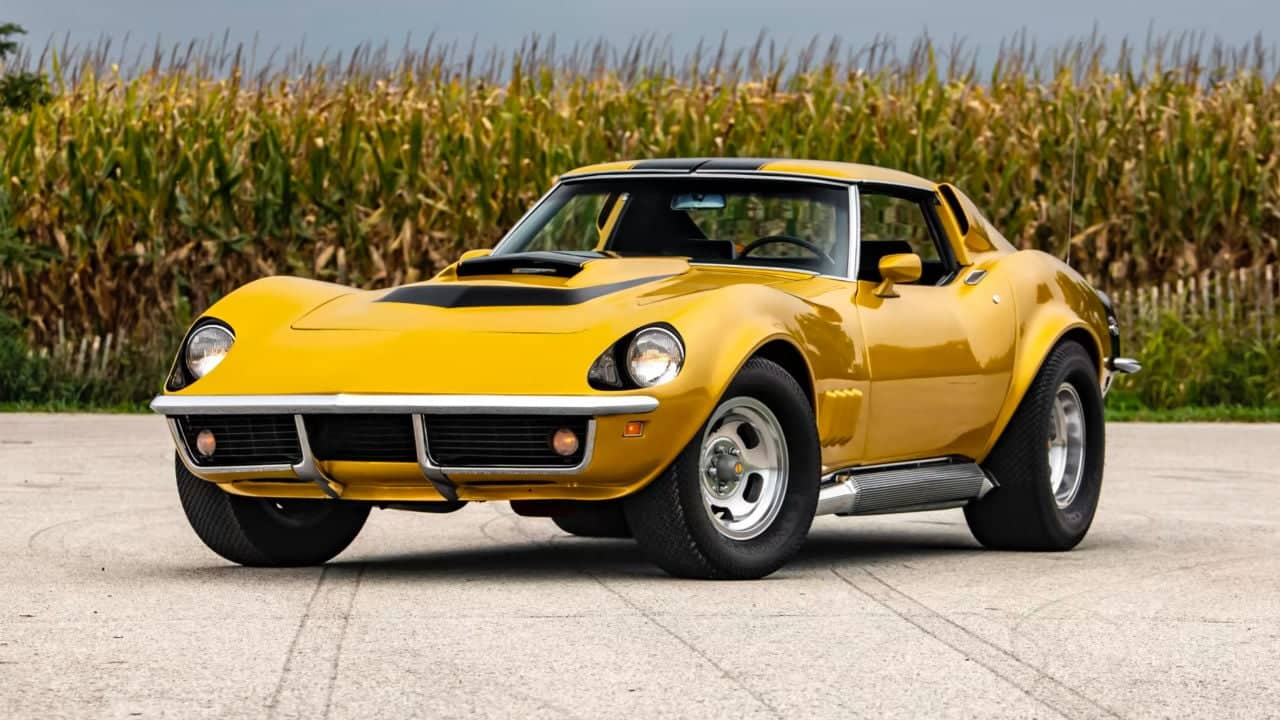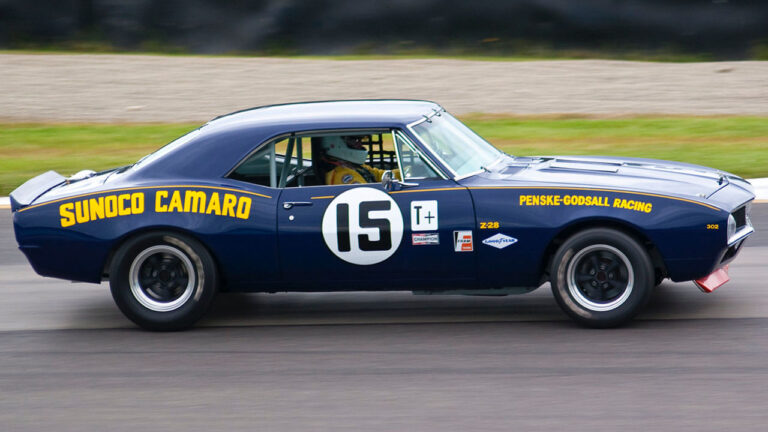24 Super Rare Muscle Cars You’ll Never See In Real Life

You’re invited to test your knowledge of the golden age of steel and horsepower when the vociferous V8 was the heartbeat of America’s love affair with the road and track.
Enter the deep recesses of automotive history, where you’ll meet some near-mystique muscle cars so rare that even the most ardent gearheads would be hearing about them for the first time today.
You’re American, a gearhead, or both, so you’re familiar with the legendary Shelby Cobra Super Snake’s rarity. You know just one exists and that you will probably never see it beyond your phone or computer screen.
What if there are many more super-rare muscle cars that many will never see in real life? You’ve got 24 of them right here, including the sneaky Super Snake, of course.
1969 Chevrolet Camaro ZL1

This is one of the rarest and most sought-after muscle cars that Chevrolet ever made. The ZL1 was a special performance package of the ‘69 Camaro, featuring the venerable all-aluminum 427 cubic inch V8 engine that could make over 500 horsepower; typically 425 horsepower at 5,600 rpm and 460 lb-ft of torque at 4,000 rpm. Remember, this was the early 1970s.
Chevy made just 69 of the ’69 ZL1 because the engine was expensive: It was originally developed for racing.
1970 Plymouth Hemi Cuda Convertible

Some gearheads would consider laying eyeballs on a 1970 Hemi Cuda Convertible a lifetime achievement– not kidding. The thing is iconic, super-rare, and used the revered 426 Hemi V8. Plymouth, a Chrysler division back then, made just 14 of these babies, a combination (with the Hemi engine) that spelled memorable wind-in-my-hair adventures.
Don’t care where the gauge rests in your bank account right now: You’re a straight-up millionaire if you have just one original spec 1970 Hemi Cuda Convertible.
1969 Ford Mustang Boss 429

Although Ford built 859 units of the Mustang Boss 429 in 1969 to meet the NASCAR homologation requirements, this model is still one of the rarest first-gen ‘Stangs you can spot on the road or in the average garage today. It was also the first Mustang to feature a rear sway bar, which improved its handling compared to other Mustangs of that time using similarly big engines.
We just read the story of a 1970 Boss 302 in (refinished) Medium Line color whose owner refused to sell it for $50,400.
1971 Pontiac GTO Judge Convertible

You’ve probably heard so much about the Ferrari 250 GTO, how it was the most expensive car ever sold at auction until the Mercedes-Benz SLR 300 Ulenhaut Coupe knocked it off that pedestal. What you may not know is that there’s another GTO far more expensive than the Ferrari.
It’s the 1971 Pontiac GTO Judge Convertible, a priced Pontiac with bold graphics, a Ram Air V8 engine, functional Ram Air scoops on the hood, and “The Judge” decals. There were just 17 of these Judges, one of which recently went under the hammer for $1.1 million.
1970 Chevrolet Chevelle SS 454 LS6

As the last bits of its name suggest, this was not the regular 1970 Chevy Chevelle. It was part of the Super Sport lineup, with performance updates like upgraded suspension, heavy-duty components, and special badging. The 454 LS6 V8 engine was one of the most powerful Chevy mills of that time. It cranked out around 450 horsepower and 500 lb-ft of torque.
1967 Shelby Cobra 427 Super Snake

The 1967 Shelby Cobra 427 Super Snake is the confirmed king of rare muscle cars since just two examples (one from the previous year) ever saw the light of day, and only one of those is still around. It was a one-off ‘Cobra to End All Cobras’ built by Carroll Shelby himself as the ultimate Cobra.
Carroll equipped it with a 427 cubic inch V8 engine that made over 500 horsepower. The man is quoted to have said he built this car to be the “fastest, meanest car on the road…the fastest street-legal Cobra I’ve ever owned.”
1971 Plymouth GTX 426 Hemi

The 1971 Plymouth GTX muscle car combined luxury amenities with the performance-oriented 426 Hemi engine. Even with the luxury bells and whistles, the Plymouth GTX’s Hemi engine could make it to 60 mph in less than 6 seconds, according to ProfessCar’s estimation.
Although Plymouth made 2,942 units, the rarity today explains why the model currently has an SCM valuation of $117,000.
1969 Dodge Charger Daytona

With an estimated 550 examples produced, the 1969 Dodge Charger Daytona was clearly not intended to be seen every day on our regular roads. Dodge developed it to lead the NASCAR racing series, so aerodynamics was central to the Charger Daytona’s design, specifically to increase the top speed on high-speed tracks.
It used various engines like the 426 Hemi and the 440 Magnum, providing impressive power and speed.
1970 Buick GSX Stage 1

The GSX Stage 1 was part of Buick’s Gran Sport (GS) lineup, a series of performance-oriented Buick models across the Skylark, Riviera, and Regal nameplates. The 1970 GSX Stage 1 was an optional performance package that included a specially tuned 455 cubic inch V8 engine rated at 360 horsepower and 510 lb-ft of torque, making it one of the most powerful engines of its time.
With just 678 GSXs built and only 479 of those in Stage 1 form, well-maintained examples command high prices in the collector car market today.
1969 Pontiac Firebird Trans Am

Although the Firebird Trans Am is a popular muscle car from the glory days of American muscle, its fame does not correlate with its availability today. It’s one of the rarest classics in history, with only around 697 units built for the 1969 model year.
The Trans Am was a high-performance version of the Firebird, emboldened with a shaker hood scoop, front and rear spoilers, Trans Am decals, and unique badging. Its power came from two V8 mills, including the 400 cu-in Ram Air III and IV, producing around 345 horsepower.
1970 Mercury Cougar Eliminator 428 Cobra Jet

The Mercury Cougar was already a more premium version of the Ford Mustang, and now the Eliminator package, introduced in 1969, blessed it with the 428 Cobra Jet high-performance engine rated at 335 horsepower. The essence of doing this was to include “performance” in the Cougar’s persona in the muscle car arena.
The Eliminator package offered more than just the Cobra Jet: It included a blacked-out grille, special striping, front and rear spoilers, a hood scoop, and a more performance-tuned suspension. A claimed 2,200 Eliminators were made in 1970, but only a fraction of those (the consensus is 500) came with the 428 Cobra Jet engine.
1969 Oldsmobile 442 W-30 Convertible

This is one of the rarest and most desirable late 1960s muscle cars, with just a claimed 91 examples made for the 1969 model year. Adding to the rarity is the difficulty of verifying a true Oldsmobile 442 W-30, requiring expert scrutiny of documentation and matching numbers.
It initially got its “442” name from the four-barrel carburetor, four-speed manual transmission, and dual exhausts, but the numerals evolved into a standalone model in 1969, ergo, the Oldsmobile 442 W-30 Convertible.
1970 Chevrolet Camaro Z/28 RS

Chevy is said to have failed to keep a detailed record of how many 1970 Camaro Z/28s got the RS package, making it a tricky business to correctly nail the tally. However, what’s clear to everyone is that 1970 was a particularly special year for the Camaro, as it entered its second generation that year with a completely redesigned body inspired by European styling cues.
The production also kicked off late in the year, which explains why the cars are often referred to as 1970 1/2 models. The Z/28 RS is one of the hottest 2nd-gen Camaro configurations, tailored specifically for the Trans Am racing series. The RS was an appearance package that blessed the Z/28 performance package with split bumpers at the front, an RS grille with concealed headlights, RS badging, and distinctive tail lights.
1969 AMC AMX/3

Thanks to the drama, grit, ambition, determination, false credits, and cultural undertones behind the AMC AMX/3’s story, many gearheads would die happy if they ever came face to face with this car. It was a mid-engine concept sports car with AMC’s 340-hp 390 cubic inch (6.4-liter) V8 engine.
The AMX/3’s designers put the car through extensive testing in Europe and the United States, but the project ultimately died in the womb due to high production costs and other financial considerations within AMC. In that time, around five completed prototypes saw the light of day, making them extremely rare collectibles today.
1969 Boss 302 Mustang Trans Am

The 1969 Boss 302 Mustang Trans Am was an ambitious project earmarked to clip Chevy’s Camaro Z/28’s wings at the Trans-Am racing series. The race required a displacement limit of 5.0 liters (302 cubic inches) for the “over 2.0-liter” class, ergo, the Boss 302’s name.
This car was Ford’s attempt at winning by marrying a powerful small-block engine and excellent handling, thanks to a beefed-up suspension with heavier springs, larger sway bars, power disc brakes up front, and a quick-ratio steering box. The Mustang Boss 302 won the Trans-Am championship that year.
1970 Dodge Challenger T/A

The 1970 Challenger T/A would go toe-to-toe with rivals like the Mustang Boss 302 and Chevy Camaro Z/28 at the Sports Car Club of America (SCCA) Trans Am competition. The T/4 in the Challengers name is short for Trans Am. Dodge prepped it with a 340 cubic inch (5.6-liter) V8 engine featuring three 2-barrel carburetors called the “Six Pack” to ensure this Camaro isn’t a walkover.
This mill blessed the T/A with around 290 horsepower and 345 lb-ft of torque. The car stood out with bold striping, a matte-black fiberglass hood with a functional hood scoop, side-exit exhaust pipes, and a rear ducktail spoiler. Homologation requirements meant that Dodge built approximately 2,399 Dodge Challenger T/A models in 1970, slotting it as one of the rarest Challengers ever made.
1965 Shelby GT350R

Neither the Shelby nor Mustang’s history is complete without the 1965 Shelby GT350R. Knowing its story is like a passing rite into the American muscle car culture, but with just 34 units built, it might as well be the next best thing in terms of rarity after the Cobra to End All Cobras.
The legend of the GT350R began with a special partnership between Carroll Shelby and Ford to develop a performance machine purpose-built for the SCCA B-Production racing. It used a modified version of Ford’s high-performance 289 cubic inch (4.7-liter) V8 engine, mated to a BorgWarner T-10M aluminum-case 4-speed manual transmission.
1969 Chevrolet Corvette ZL1

Like its Camaro sibling, the Corvette ZL1 was a high-performance package that added an all-aluminum 427 cubic inch (7.0-liter) V8 engine that came paired with a heavy-duty Muncie M22 “Rock Crusher” 4-speed manual transmission.
On paper, this engine’s output was rated at 430 horsepower; the reality told a different story, as it was known to make well over 500 horsepower. Originally developed for drag racing, the ZL1 engine was among the most powerful ever featured on a Corvette. There were just two 1979 ZL1s ever made.
1970 Plymouth Road Runner Superbird

The Road Runner is an American classic; the Superbird was the high-performance version designed specifically for NASCAR racing. It’s known for its enhanced aerodynamic styling marked by a large rear wing and a nose cone.
The Superbird got flight power from three engines, including the 426 Hemi V8, producing 431 horsepower. Plymouth had to make around 1,920 units to meet NASCAR’s homologation rules.
1970 Plymouth Hemi Superbird

The Road Runner Superbird we discussed earlier and the Hemi Superbird is essentially the same car; the main difference lies in their engines. The Road Runner Superbird used several engines, including the standard 440 cubic inch (7.2-liter) V8 engine and the optional 426 cubic inch (7.0-liter) Hemi V8 engine.
When a Road Runner Superbird got the Hemi, it was called the “Hemi Superbird.” The Hemi Superbird got a separate seat on this list because it was the top-of-the-line Superbird as well as the most sought-after, with just 135 Superbirds getting the legendary Hemi.
1969 Yenko Camaro

There are conflicting reports of the production numbers, but the consensus is that Yenko Chevrolet made around 201 examples of the Yenko Camaro in 1969, making them some of the rarest and most desirable classic Camaros ever made. Yenko Chevrolet was a performance car dealership in Canonsburg, Pennsylvania, owned by the late racecar driver Don Yenko.
The Yenko Camaro featured a modified L27 427 cubic inch V8 engine producing 425 horsepower. There were also performance upgrades to the suspension, brakes, and other components to improve the Camaro’s street cred.
1970 Baldwin-Motion Phase III GT Corvette

The Baldwin-Motion GT Corvette was the fruit of a partnership between the Baldwin, New York-based Motion performance tuning shop and the Baldwin Chevy dealership. These models were thoroughly customized high-performance Corvettes produced from the late 1960s to early 1970s. The Baldwin-Motion creations were like the supercars of the muscle car world: They were the fastest among their peers.
The Phase III GT was the ultimate expression of the Baldwin-Motion Corvettes, extensively modified beyond the typical powertrain upgrades. Phase III showcased dramatic styling changes, including a fastback rear window, custom front and rear end treatments, and flared fenders. It is believed that just 12 Baldwin-Motion Phase III GT Corvettes ever got made, as they were hand-made, built-to-order Corvettes.
1969 Ford Torino Talladega

Ford developed the Talladega, along with other warriors like the Mercury Cyclone Spoiler II, to represent the Blue Oval at the NASCAR stock car racing (or the NASCAR Grand National Series), now known as the NASCAR Cup Series. Its name came from the Talladega Superspeedway track in Alabama.
Ford based the car on the Torino model, including the high-performance road version called Torino Cobra. Talladega got motivation from Ford’s most potent mill at the time– the 428 cubic inch (7.0-liter) Cobra Jet V8 engine, paired with a C6 automatic transmission or a four-speed manual. Only 754 units were built in the two months it was produced.
1969 Chevrolet Chevelle COPO 427

The COPO 427 is a product of Chevy’s Central Office Production Order (COPO) system in the 1960s. The COPO system was Chevy’s answer to dealers who could now order specially configured performance cars, typically reserved for fleet or special-order vehicles. The COPO 427 was one of these special orders; a regular ‘69 Chevelle now transformed into a drag strip monster.
It featured the L72 427 cubic inch V8 engine producing 425 horsepower on paper but much more in actuality. It could sprint to 60 mph in less than six seconds, covering the quarter-mile in the low 13-second range– and there you have one of the fastest production cars of its time.





